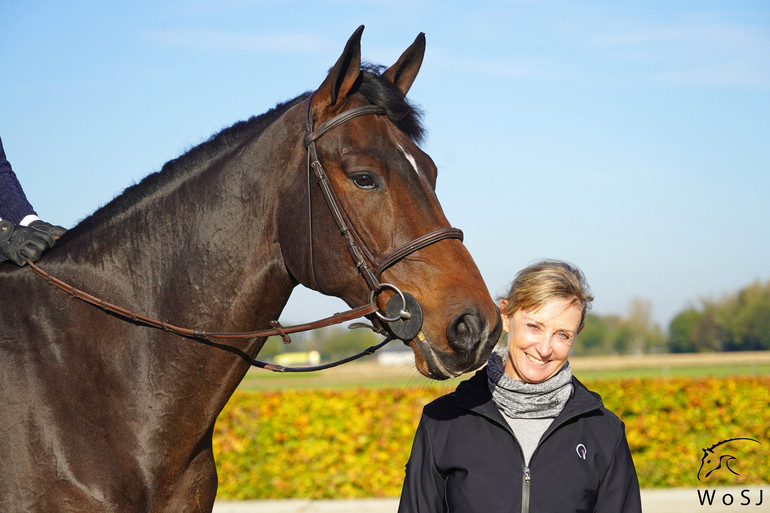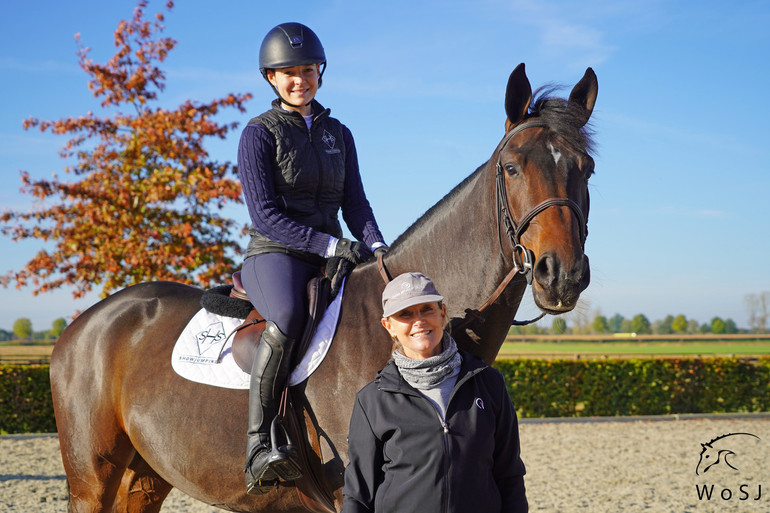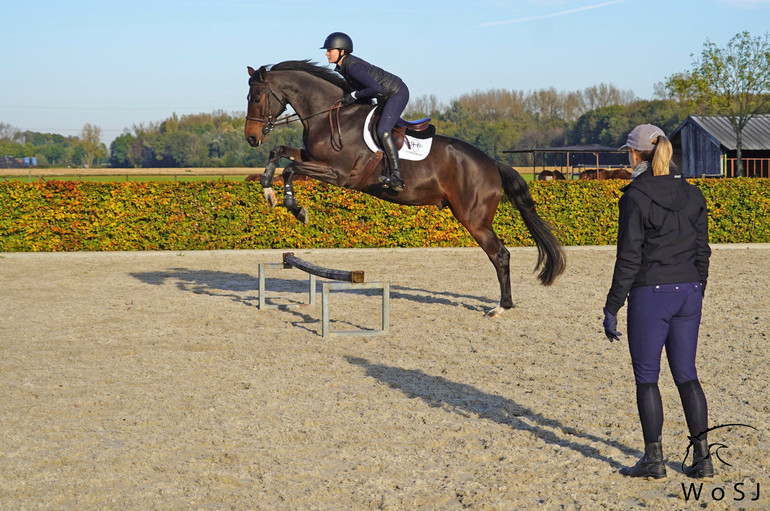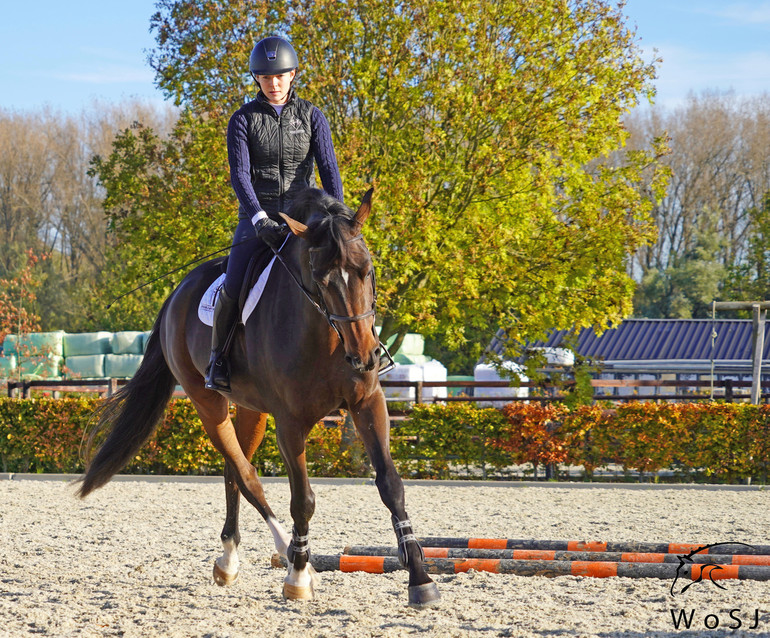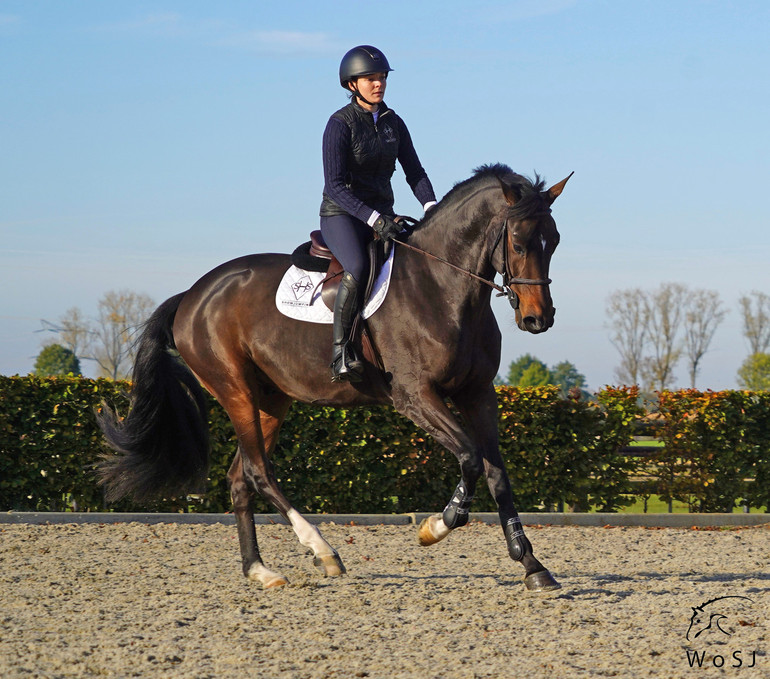Text © World of Showjumping
Originally a dressage rider and judge, Sally Amsterdamer became involved in flatwork for showjumpers when she was hired by Henk Nooren to help train his clients. To World of Showjumping, Amsterdamer tells about the philosophy behind her work and how patience truly is the best virtue.
From 2005 to 2008, Amsterdamer worked full time for Nooren. “During this time, the idea of RideAbility – flatwork for showjumpers – developed, and has continued to do so until this day," Amsterdamer tells. "The intention of RideAbility is not only to improve the rider, but develop the horse's body into one of a true athlete. Having the opportunity to teach riders from many different countries, I became a freelancer, working mostly in my area of Holland, Belgium and Germany but also travelling extensively all over the world to give training seminars in countries such as Finland, Poland, Sweden, Estonia, Greece, Portugal, Cyprus, USA, Canada and Mexico.”
“Many showjumpers are not convinced that they need to have a consistent, progressive and systematic programme of flatwork for each horse,” Amsterdamer continues to tell about the common misconceptions she has faced in her field of work. “These riders seem to think that flatwork is too much like dressage – which it is, but not in the sense of training a dressage horse to compete in a dressage competition and that the rider has to ride like a dressage rider. What does the French word "dressage" actually mean? It means "training" – described as "the art of riding and training a horse in a manner that develops obedience, flexibility, and balance." What could be better for a showjumping horse?”
“Many get totally onboard when they realize that good flatwork makes the horse sound. I have often seen this with my own eyes. Horses' muscles can develop unevenly: Many horses are not straight, but move with different degrees of crookedness. Through symmetrical riding we can change a horse's body for the better, helping the horse to work in a symmetrical way – as much as physically possible for that horse. This way of training lessens a horse's chance of injury as well as wear and tear on the body, especially the joints.”
“In addition, I always emphasize to my riders – especially the young ones – the importance of taking care of their own bodies,” Amsterdamer tells. “Adequate daily stretching and even working with a physiotherapist if there is a specific physical need is encouraged. I have found that most riders are actually lazy in this respect, taking so much care of their horse's body, but neglecting their own.”
“The philosophy behind my work is that a showjumping horse needs basic training just like a dressage horse does, which means I incorporate all the components of the training scale: Rhythm, suppleness, contact, impulsion, straightness and later collection,” Amsterdamer says. “Rhythm with balance and self-carriage is always the most important factor in any training exercise. The additional focus is on what we require of the horses between the jumps in the ring: Turning right and left easily as well as being adaptable to opening and closing the stride. An integral part of my work is training over poles and cavalettis to connect the flatwork to the jumping.”
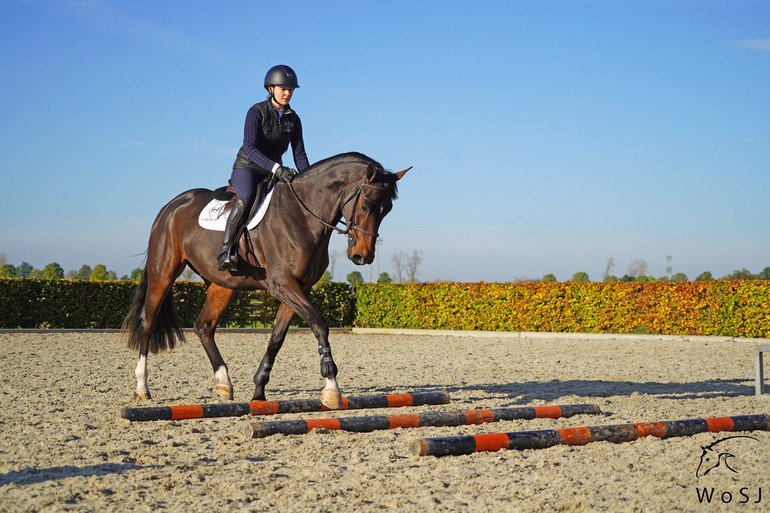
"Through symmetrical riding we can change a horse's body for the better, helping the horse to work in a symmetrical way – as much as physically possible for that horse. This way of training lessens a horse's chance of injury as well as wear and tear on the body, especially the joints, ” Sally Amsterdamer tells. Photo © Nanna Nieminen for World of Showjumping.
According to Amsterdamer, true training begins with a correct seat. “The basic elements of flatwork can only be carried out correctly if the rider has a good and balanced seat,” she says. “Unfortunately, showjumpers seem to care less about this fact as they – unlike dressage riders – are not judged on it. However, showjumpers truly benefit from a trainer who focuses intensively on the seat. An extremely important part of my training is about symmetry, both in the horse and the rider. The old sayings ring true: "Stiff rider, stiff horse; or, "You ride better, your horse goes better". Often, I see how a very small change in a rider's body or seat can make a huge difference in how the horse goes. So, the main focus should be seat, seat and seat, as the only way a rider can have good hands is with a correct, balanced seat – and that is another story!”
Amsterdamer’s favourite exercise is ‘the square’. “I always start with the square,” she tells. “Many riders turn badly, at least in one direction. Plus, this is the best exercise to introduce flatwork to showjumping riders as it is straight into working on something actually connected to showjumping. The square focuses on the symmetry of both horse and rider, straightness of both, and perfecting turns. When practicing circles, it is very easy to allow the horse to drift a little out, but when riding corners on a perfect square, the rider can improve turns and make them more precise. Turns are an integral requirement in the ring. Results can depend, not just on one-tenth but on one-hundredth of a second. Therefore, it is imperative that turns are the best they can be.”
“Before doing the square, the horse should be well warmed up and have done some circles and changes of rein in trot and canter,” Amsterdamer explains about the exercise. “Then I ask the rider to do a small square in walk in order to teach the horse the aids, especially the weight aid before the turn which means the weight needs to be more down on the rider's inside seat bone. The shoulders of the horse should be turned with two reins evenly – there is no need for bend in the neck in this work – and the rider should use more outside leg if the horse is not turning quickly enough. At first, in trot the square should be large but not ridden on the fence or wall of the arena: It is the rider's aids that should be turning the horse, not the horse turning because it reaches the fence or wall. In walk, the corners of the square can be quite small and sharp, increasing outside leg pressure to make the horse react more quickly. Later, when the horse follows the weight aids of the rider well, the leg pressure can be less."
“This exercise is obviously carried out on both reins in walk, and then done in trot,” Amsterdamer continues. “In trot, the corners can be a little easier than in walk, but they must be corners, not a curved line resembling a quarter of a circle. When the horse carries out this exercise well in trot, then the same can be done in canter. Ultimately it is the canter square which is the most important exercise for a showjumper. When the large square is easy to ride in canter, then the horse can be ridden on a smaller square. When that is good, the following exercise is the triangle – which adds even more ability to turn sharply, as needed in a jump-off.”
Any pole work or cavaletti practice relating to adjusting the canter stride are also among Amsterdamer‘s favourite exercises. “Both being closely connected to riding between the jumps – my "right; left; open; close" philosophy,” she says. “With ground poles, I like to work on a circle of four poles where four or five strides are ridden in between the poles. This exercise incorporates turning well plus adjusting the length of the stride. In addition, it checks the symmetry of the horse's canter stride between right and left. I also like to put two or three poles on straight lines and the rider practices adding at least two extra strides between the poles. Unfortunately, many showjumping riders do not close up the stride correctly, from the back to the front. An integral part of this pole work is first being adequate at riding a decent shoulder-in in trot and shoulder-fore in canter, learning to ride a horse into collected strides with the horse putting more weight on the hind legs, and not just pulling back on the reins.”
“The most important thing in training a horse is patience,” Amsterdamer concludes. “Without this we are not good trainers. Patience and a true love of horses outweighs every other aspect of training. Showing consideration to each horse's ability, character, physical and mental strength at each stage of the training is paramount.”
No reproduction without written permission, copyright © World of Showjumping.com



